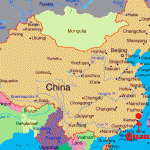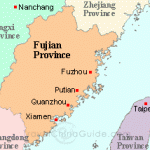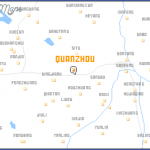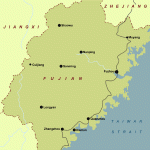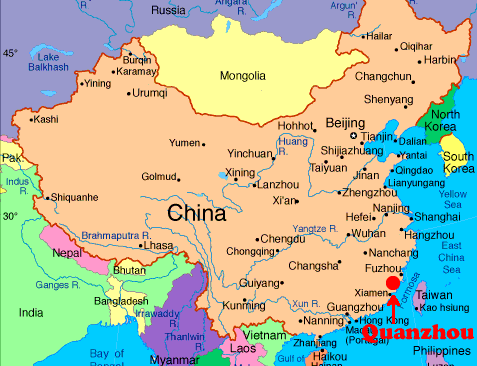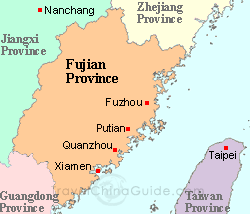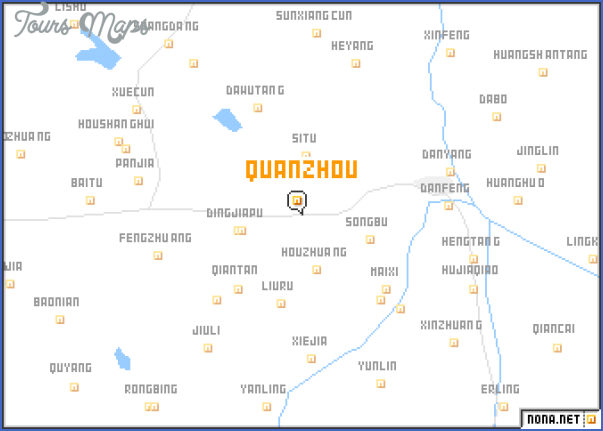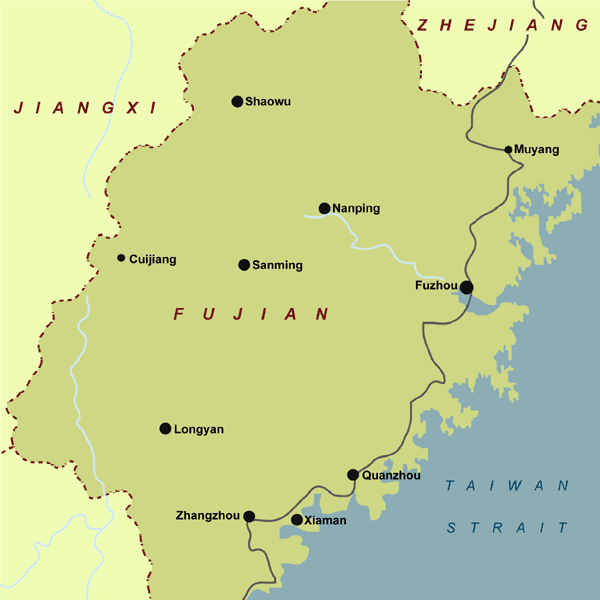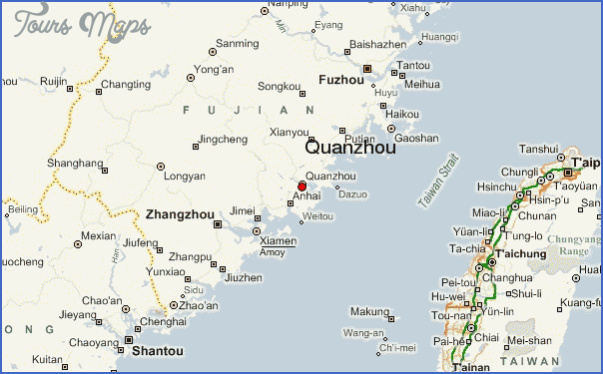Province: Fujian
Altitude: 200m/656ft. Area: 530sq.km/204sq. miles Population: 120,000 (conurbation 400,000)
Quanzhou lies at 118°35’E and 24°52’N in the south-east of the Fuijian province on the Jinjiang estuary. From Xiamen and Fuzhou it is accessible by air or by sea.
Already in the 6th c. Malayan ships docked in Quanzhou, and it was founded in about700. Quanzhou grewuntil inthe 10th c., undertheTang, it had become with Canton and Yangzhou one of the three largest Chinese international trading ports. From the 11th c. to the 14th c. the city had its greatest flowering. At this time the woven satin which was manufactured here was even sold in the European market. Some expert linguists think that the word satin is taken from “Zaiton”, which is the name Marco Polo gave to Quanzhou in his work “Millions”. The Venetian travelled back to Italy from Quanzhou in 1292, and noted in his travel journal: “Zaiton is the biggest port in the world”.
During the following centuries, the city attracted many foreign dealers, missionaries, and travellers, many of whom finally settled here. In the 15th c. the city lost its status as a trading centre.
The Mosque of Peace and Clarity, situated in the Tumen Jie in the southeast of the city, was erected in 1009 in the style of a prayer house of Damascus. The construction was financed by donations from foreign Muslims. It was restored in 1310. Islamic merchants were already coming here in the 7th c. to seek trade.
As the mosque is one ofthe oldest in the whole of China, the government placed it under its protection. For this reason an order by the Ming Emperor Chengzu is engraved on a stone tablet inside the mosque which dates from 1407. The order begs respect for this important building and reverence for the Islamic faith. The impressive main gate is still preserved. On the mosque walls passages from the Koran are engraved in old Arabic.
The Temple ofthe Beginning ofthe New Age, situated to the north-west of Quanzhou, in Xi Jie street, dates from 686. It is one of the largest temples in China with an area of 70,OOOsq.m/22,967ft. At one time more than one thousand monks were reported to have lived here.
The 20m/66ft high main building, the Buddha Hall, was erected between 1368-1644 under Ming rule on the remains ofthe previous building. The 24 extremely finely chiselled statuettes on the columns represent Apsaras. The base of one of the columns is decorated with sphinxes; a sign that the early Chinese were aware of Mediterranean culture. On an altar in the rear section of the hall there is an interesting statue only 50cm/19in. high, the “thousand armed goddess of mercy”. Note that no two arms are exactly alike.
More than ten thousand books of sacred writings are kept in the Pavilion of the Sacred Books (Cangjinag Ge).
Quanzhou Map Photo Gallery
Maybe You Like Them Too
- The Best Cities To Visit in The World
- World’s 10 Best Places To Visit
- Coolest Countries in the World to Visit
- Travel to Santorini, Greece
- Map of Barbados – Holiday in Barbados

